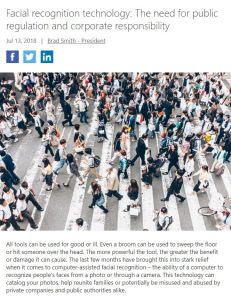Join getAbstract to access the summary!

Join getAbstract to access the summary!
Brad Smith
Facial Recognition Technology
The need for public regulation and corporate responsibility
Microsoft, 2018
What's inside?
Microsoft addresses the human rights and regulatory challenges resulting from facial recognition technology.
Recommendation
It’s unusual for big tech companies to ask for government regulation – yet Microsoft has done just that. In a blog post, the company’s president Brad Smith warns about the potential misuses of facial recognition technology, stating that a common regulatory framework will be in everyone’s best interests. It is not yet known whether Microsoft’s competitors will join his call for industry standards. Yet Smith’s essay raises a series of important ethical questions, which getAbstract believes tech industry insiders will want to consider.
Summary
About the Author
Brad Smith is the president and chief legal officer of Microsoft.


















Comment on this summary